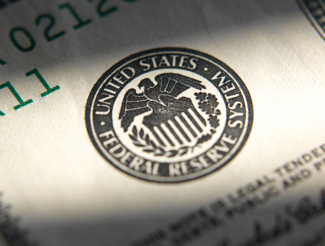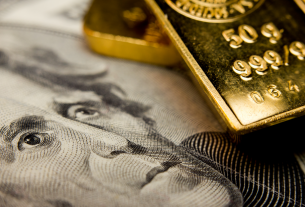Many investors have undoubtedly heard of the Federal Reserve System, even if they may not know exactly how it operates. But fewer have heard of the Federal Open Market Committee (FOMC), which actually makes the monetary policy decisions that the Fed carries out.
The FOMC consists of the seven members of the Board of Governors of the Federal Reserve System, who are all appointed by the President, the President of the Federal Reserve Bank of New York, and four of the remaining eleven Federal Reserve Bank Presidents, who rotate onto the FOMC about once every three years.
The FOMC meets for eight regularly scheduled meetings per year. All the Federal Reserve Bank Presidents take part in the deliberations, even those who aren’t currently voting members of the FOMC. FOMC participants assess the health and strength of the economy and vote on monetary policy actions, most importantly targeting the federal funds rate and deciding on monetary actions such as quantitative easing and repurchase agreements.
You may be saying to yourself, this is all fine and good, but how does it affect my investments? Read on to find out.
How Monetary Policy Works
The Federal Reserve System was founded in order to provide an “elastic currency” to the US economy. In the minds of its creators, the Fed would inject money into the financial at times when it was needed, for instance at harvest time or during financial panics, and withdraw the money once it was no longer needed.
The primary means by which the Fed was supposed to do that was through open market operations, purchasing and selling securities on the open market. Those securities could be US government bonds, corporate debt, farm debt, etc. When there was a need for money in the economy, the Fed was supposed to purchase securities, using money it had newly created. When the Fed wanted to withdraw money from the economy, it would sell those securities back on the open market.
The Effects of Monetary Policy
In practice, however, a central bank with the ability to create money ex nihilo is under tremendous pressure to continue creating money. By injecting newly created money into the financial system, interest rates are lowered, making it cheaper for businesses to borrow money to expand their operations. They become used to those low interest rates, and militate against allowing interest rates to rise back to market levels.
Thus the elastic currency, rather than rising and falling as market conditions dictated, became elastic only in one direction, upwards. When the Federal Reserve was created in 1913, the total money supply in the US was $19 billion. Today it is nearly $20 trillion and growing. That’s a thousand-fold increase in a little more than a century.
As we have come to realize over that century, the effects of monetary policy are anything but neutral. And it’s the manipulation of the money supply by central banks that has caused and contributed to the great financial crises of the last century, including the Great Depression, the 1970s stagflation, the Dotcom bubble, and the housing bubble.
Because interest rates perform a signaling function, lower interest rates signal that more money is available to borrow. But because interest rates are naturally lowered when people decide to defer consumption and save, preferring to consume in the future, interest rates that sink due to increased savings still allow for future consumption.
Interest rates that are manipulated lower through money and credit created out of thin air, on the other hand, signal to borrowers that more money is available. But because people are consuming in the present and not saving more, they don’t have the ability to increase consumption in the future.
By manipulating interest rates, the Fed incentivizes borrowing to finance long-term projects such as skyscrapers, ships, factories, and housing developments. But when those long-term projects are completed, there isn’t a demand for them because there hasn’t been any saving to enable that future consumption.
That manifests itself as housing bubbles, investment bubbles, and various other sorts of asset bubbles. Resources have been malinvested, being directed into areas of the economy that don’t serve a productive function. And until those malinvested resources are redirected into serving consumers’ actual needs and wants, an economy can’t recover from a recession.
Unconventional Monetary Policy Since the Financial Crisis
The housing bubble was a classic example of the effects of monetary policy on the economy. In its attempts to paper over the collapse of the Dotcom bubble (itself a Fed creation), the Federal Reserve continued to inject money and credit into the financial system. That money made its way into the housing sector, creating a massive housing bubble.
Interest rates were low, enabling cheap borrowing. That led to the rise of house flippers, people who bought dozens of houses with cheap money, then sought to make a profit. Banks had money to burn, and actively looked for more and more borrowers to buy houses, so that they could make a profit on loaning money.
Lending standards were loosened as a result, and people who had no business taking on credit ended up with multi-hundred-thousand dollar mortgages. The result of the bubble and its ultimate collapse was foreseen by some, but it was incredibly destructive to the entire economy. Major financial firms such as Bear Stearns and Lehman Brothers completely collapsed as a result, and many areas of the country are still feeling the effects of the bubble’s collapse.
Not learning its lesson from the Dotcom bubble’s collapse, the Fed intervened in the way it had in all previous financial crises. It pushed interest rates down, down, down. But this time it had to push interest rates all the way to zero. And still that wasn’t enough.
Even the $700 billion bank bailout wasn’t sufficient, and so the Fed began its policy of quantitative easing, purchasing trillions of dollars worth of securities in order to shore up the financial system. The Fed probably thought that it could buy those securities to stabilize the system, then sell them once the economy recovered. But today the Fed’s balance sheet is still over $4.2 trillion, or about five times what it was before the financial crisis.
Wall Street and the US financial system have become addicted to easy money and low interest rates, and they don’t want either to stop. Any attempt the Fed makes to normalize monetary policy will result in a collapse of markets, and so once again the Fed faces pressure to continue its monetary easing.
What Does the Future Hold?
All eyes are on the Fed now, or more specifically on the FOMC. At the beginning of March, the FOMC held an unscheduled meeting at which it decided to make an emergency 50 basis point cut to the federal funds rate, cutting its target range to 1.00-1.25%. That move was intended to demonstrate to markets that the FOMC stood ready to shore up the economy. But its effects were just the opposite.
By making such a massive cut, the first emergency rate cut since 2008, the FOMC signaled that the economy was actually in weak shape since it needed such a large cut. What we’ve seen since then bears that out, with the Dow Jones shedding thousands of points and falling into bear market territory. Further FOMC actions helped stimulate those massive declines.
Since that first emergency rate cut, the Federal Reserve has:
- Promised up to $5.5 trillion in emergency liquidity to repo markets;
- Cut its target federal funds rate another 100 basis points, to 0.00-0.25%;
- Promised at least $700 billion in quantitative easing;
- Re-opened crisis era emergency liquidity facilities such as the Primary Dealer Credit Facility, Commercial Paper Funding Facility, and Money Market Mutual Fund Liquidity Facility;
- Opened up dollar swap lines with numerous foreign central banks;
- Created new emergency liquidity facilities to purchase corporate debt;
- Increased the size of its balance sheet by over $1 trillion.
Two things should be clear to investors today. First, the gains made by stock markets since the financial crisis have largely been the result of the FOMC’s monetary policy. Second, the FOMC’s intervention thus far has put us back to where we were in 2008 and 2009, when markets were on the verge of total and complete collapse. The Fed will repeat everything it can from its 2008 playbook, but there’s no guarantee that its actions this time around will bear any fruit.
Looking back at 2008, we can see that the FOMC’s actions to stabilize markets were largely ineffective. Stock markets continued to fall, despite the trillions of dollars worth of securities purchased by the Fed and the push to drop interest rates to near zero. And the subsequent rounds of quantitative easing did more to monetize the federal government’s debt spending than to strengthen the economy. All of that money eventually made its way to stock markets, enabling the stock market bubble that we’re seeing today.
There’s no reason to think that the FOMC will do anything different than what it has done in the past. After all, when your only tool is a hammer, everything looks like a nail. The FOMC will very likely engage in more quantitative easing above and beyond what it already has pledged and, because interest rates are already at zero, there’s a very real risk that the FOMC will try to push interest rates into negative territory.
All of this will be bad news for stock investors, but great news for those who invest in gold, silver, and other precious metals. We’re headed back to a period that will likely see markets perform much the same as they did in 2008 and in the years thereafter. Stock markets recovered only weakly, while gold and silver took off and reached record highs. With gold and silver already moving in response to recent events, there’s every indication that those investors who move into gold and silver today will be able to reap the gains that will follow.
If you’re interested in learning more about how to protect your investment portfolio with gold and silver, contact the experts at Goldco today. Their years of experience helping Americans protect their retirement savings give them the edge when it comes to helping you protect your investments. Given the risk to your investments posed by the FOMC’s future actions, you owe it to yourself to keep your assets safe. Contact Goldco today to find out how you can do that.
This article was originally posted on Goldco.





